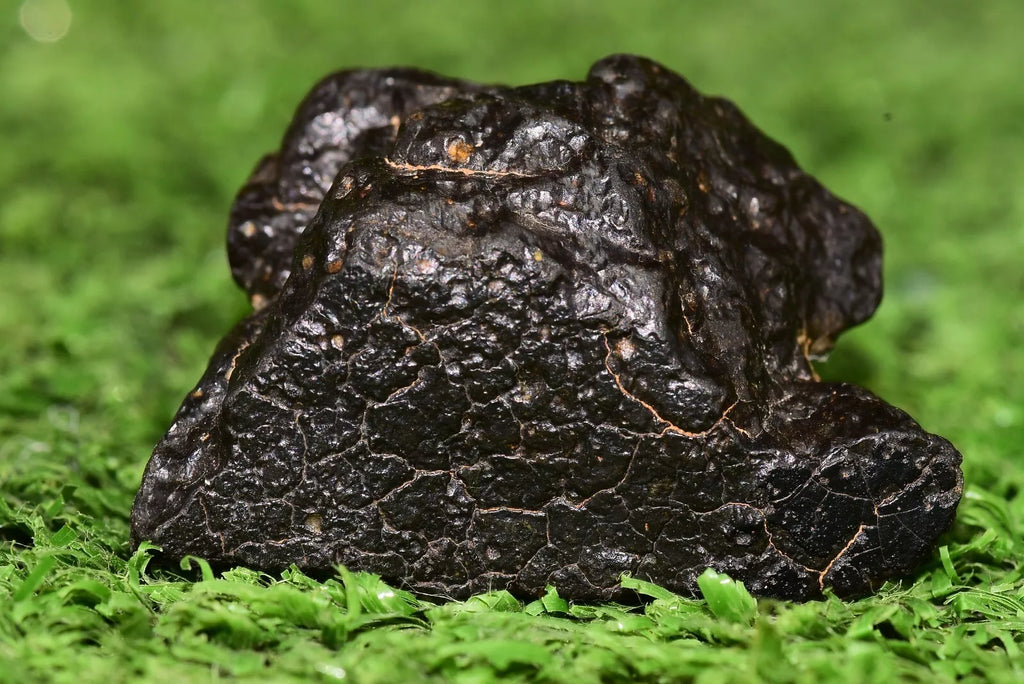Meteorite Carbonaceous chondrite Ck3 NWA 14406 Main Mass 18.9G
Meteorite Carbonaceous Chondrite CK3
Experience the wonder of the universe with this Carbonaceous chondrite Ck3 NWA 14406 meteorite. The main mass weighs 18.9G and is accompanied by a Certificate of Authenticity (COA).
The meteorite displays a dark brownish interior and is composed of sharply defined separated chondrules with an apparent mean diameter of about 800 µm. Sparse CAIs are present in a matrix dominated by Ni-bearing ferroan olivine. Olivines and low-Ca pyroxene in chondrules often show strong compositional zoning. More minor phases include intermediate plagioclase, Ca-pyroxene, troilite, and pentlandite, while metal was not detected. Cr-bearing magnetite is abundant.

This meteorite is a unique and rare specimen that will surely impress any collector or enthusiast. Your purchase includes the meteorite as shown, complete with a COA, ensuring its authenticity and value.
Don't miss out on the opportunity to own a piece of the universe with this Carbonaceous chondrite Ck3 NWA 14406 meteorite. Order now and add an extraordinary and fascinating piece to your collection.
The Meteorite carbonaceous chondrite CK3 is a rare and valuable specimen, sought after by collectors around the globe. This particular piece, known as NWA 14406, represents a main mass weighing 18.9 grams. Carbonaceous chondrites like CK3 are some of the most primitive and pristine materials in the solar system, because they contain a high abundance of organic compounds and water-bearing minerals. This makes them incredibly important for scientific research, as well as highly desirable for meteorite enthusiasts.
This meteorite was discovered in North West Africa (NWA), a region renowned for its rich deposits of space rocks. The classification CK3 pertains to its carbonaceous chondrite nature, with 'C' indicating carbonaceous, and 'K3' signifying a specific subtype characterized by unique mineral and chemical compositions. Owning a piece of CK3 means having a fragment of cosmic history, as these rocks are believed to have formed over 4.6 billion years ago, around the same time as our solar system.
Collectors looking for genuine meteorite samples will find NWA 14406 an exciting addition to their collections. Every meteorite tells a story of the universe's past, and with NK3 carbonaceous chondrites, you hold more than just a rock; you possess evidence of early solar system processes. This mass of 18.9 grams is an ideal size for display or study, offering a close look at the ancient building blocks of planets and other celestial bodies.
For those in the scientific community, a CK3 meteorite can provide invaluable insights. Embedded within its matrix are clues about the early solar system's conditions and processes. From studying its isotopic ratios to understanding the mineralogy, researchers can unlock secrets of planetary formation and the origins of water and organic materials in the solar system. The NWA 14406 also captures the imagination of anyone intrigued by space exploration and astrogeology.
Not only is the Meteorite carbonaceous chondrite CK3 a piece of scientific treasure, but it's also a testament to the sheer wonder of the cosmos. As you hold this fragment, you connect with the vast, unfathomable history of space and time, sparking curiosity and wonder about our universe. The 18.9-gram main mass of NWA 14406 is prepared meticulously to ensure it reaches you in pristine condition, ready to be part of your meteorite collection or study arsenal.
Investing in a meteorite like CK3 NWA 14406 is more than an acquisition; it’s a journey into the cosmos' rich tapestry. Whether you're a seasoned collector, a budding enthusiast, or a researcher, this meteorite promises to be an invaluable asset, providing both scientific and aesthetic value. Celebrate and explore the wonders of space through the unique and fascinating Meteorite carbonaceous chondrite CK3.










